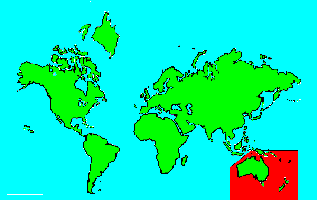SPECIES INFO
Green backed stingaree (Urolophus viridis) is found from south eastern Australia to Tasmania. This is a deep water species usually found from 250 feet to 600 feet below the surface. This stingaree can reach about 21 inches in length. This can be pale colored to somewhat green in color.Stingaree family (Urolphidae) contains about 40 species spread among about 3 different genera. These are well represented near Australia with representatives of all genera and about 20 species. These are generally small rays, and no single species exceeds 32 inches. Stingarees can swim forwards or backwards and should be avoided because of dangerous venomous spines. Many species bury in the sand.
Stingrays and manta rays (Order Myliobatiformes) contain the familiar skates, rays, and sawfishes. They are basically flat fish with both eyes on the top of the head and gill slits on the ventral side of the body. They appear to swim with the sides of the body flapping up and down as opposed to the conventional fish approach of using fin and tail motions for locomotion.
Sharks and rays (Elasmobranchi), cartilaginous fishes, deserve to be a class separate from the normal fish, in that they do not have a bone skeleton but rather a cartilage skeleton.
Fertilization is internal in this class which also separates them from the bony fish class. Although there are a few fresh water species, the majority of the species in this class are found in salt water. As of 2005, there were about 500 known species of sharks and about 600 known species of rays.
David Ebert, author of a recent book on sharks, rays, and chimaeras of California, counts a total of 988 described species in the class with about 150 additional species awaiting scientific description. He breaks down the described species to 410 species of sharks, 543 species of rays, and 35 species of chimaeras.
Many species of sharks face an uncertain future, as the Chinese purchase shark fins to make shark fin soup. It was estimated that 100 milllion sharks are killed each year for this purpose. However, recent estimates indicate the Chinese are reducing their consumption of this exotic soup.
Backboned Animals (Phylum Chordata) are the most advanced group of animals on earth. These animals are characterized by having a spinal cord or backbone. Most members have a clearly defined brain that controls the organism through a spinal cord. Fish, amphibians, reptiles, birds, and mammals are in this phylum.
Currently, some taxonomists believe that the fish should be divided into two groups (sharks and regular fishes) and that there are some other primitive groups in the phylum such as hagfish or lampreys.
Animal Kingdom contains numerous organisms that feed on other animals or plants. Included in the animal kingdom are the lower marine invertebrates such as sponges and corals, the jointed legged animals such as insects and spiders, and the backboned animals such as fish, amphibians, reptiles, birds, and mammals.

